Twenty five years ago, GeoSpatial Services (GSS) was formed with just a handful of employees and the desire to provide hands-on digital mapping and experiences for students. This on-campus project center has grown to:
- 80 employees (including 27 permanent plus 50 students on both Saint Mary’s Twin Cities and Winona campuses);
- Providing an additional continuous revenue stream for the school annually;
- National recognition and a lengthy list of clients, including the Biden administration, Bureau of Land Management, U.S. Fish and Wildlife Service, and the National Park Service.
In its 25-year history, more than 500 graduate and undergraduate students have worked on a variety of projects, which largely revolve around creating and analyzing natural resource information. Job placement has been an astounding 99%, and includes alumni:
- Brian Boulmay M’98, C’98, Petroleum Community & Solutions at Esri
- Dianna Gryniewski ’04, C’05, Enbridge Pipelines
- David Johnson C’11, M’16, Saint Paul Port Authority
- Priyanka Chakrabarti C’13, M’15, Australia New South Wales Planning Board
- Timothy Boland C’07, M’08, Union Pacific Railroad
Director Andy Robertson says GSS actually has more work than they can handle, as their reputation has spread.
“Success breeds success,” he said. “Our student load and our project load has increased exponentially over the past five years. Where we had six students seven years ago or less, now we have just over 50 and we’re still scrambling a bit.”
Fellowship program winners announced

GSS is proud to announce the first-ever winners of the new GSS Fellowship: Connor Yocum, Michelle Doering, Theresa DeGross, and Paulrisa Suah. These incoming students will receive a first-year $5,000 scholarship and a part-time paid internship with GSS throughout their college career (if they so choose), as well as ongoing professional and career development opportunities.
The goals of the fellowship program are to attract high-potential undergraduate students and provide them with experiential learning opportunities that will prepare them for the workplace within their chosen disciplines. Additionally, this program will foster on-going collaboration between GSS and the university’s academic disciplines. Geographic Information Science underpins many industries and current technologies, such as health care services, sales and marketing, emergency response, crime analysis, climate change, real estate, and environmental management.
Which students benefit from working in GSS?
GSS employs both graduate and undergraduate students from all disciplines. The students who benefit most directly from the experience of working at GSS are the M.S. in Data Intelligence and GeoAnalytics students and science majors at the undergraduate level (particularly environmental biology). But, Robertson said, students in business, theatre, history, and criminal justice have all gone on to careers in the geospatial technology field after having been exposed to GIS technology through working at GSS.
“The application of geospatial technology spans all disciplines GeoSpatial Services focuses on the application of the technology to natural resource management, however, a solid understanding of the software tools can benefit the career aspirations of students from any undergraduate major,” he said.
GSS works in GIS
They operate in the field of geographic information science, also known as GIS. Students in GSS at Saint Mary’s most often map using remote satellite imagery to assess wetlands, streams, lakes, rivers, and vegetation; they also do field verification, which includes traveling to some of our nation’s most beautiful locations.
Their work varies from assessing the natural resource condition for 38 national parks across the U.S., to assisting seven tribes in the Midwest with developing a wetland and water management program, to providing the Biden administration with information related to the clean water act. Read more about their work with tribes.
The GIS market is projected to reach $25.6 billion by 2030, increasing at a compound annual growth rate of 12.1% between 2020 and 2030, per Prescient & Strategic Intelligence. The U.S. Department of Labor predicts that GIS skills will be in high demand over the next decade, with average annual salaries of $70,000.
Photo caption: GSS staff members Kevin Stark and Keely Hansen traveled to Northern California in September for seven days to complete a wetland mapping fieldwork trip.


